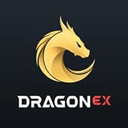1 Level
5 Review
0 Karma
Review on Zilliqa by Troy Quessy

Zilliqa’s sharding distributes the work among the network, and once the work…
Zilliqa’s sharding distributes the work among the network, and once the work is done it’s all put together.
What’s great about sharding is that it enables the network to become faster with new entrants, instead of slower. The more users the Zilliqa network attracts, the more transactions the network can process at an increasingly faster rate. With every 600 new nodes, the transaction throughput of the network increases.
In theory, there is no limit to the number of transactions per second the Zilliqa blockchain can handle, if the number of nodes keeps increasing. For now, Zilliqa has already achieved 2,488 transactions per second on their testnet — a number that greatly exceeds that of Bitcoin and Ethereum.
Pros
- If there are, for instance, 4,200 active nodes, there would be 7 shards. In this case, every shard handles 1/7, or 14.3%, of the total network transactions. All transactions that are verified by a shard are packed into a microblock. Then the microblocks of each shard are added together (7 microblocks, going by our example) based on a process called DS Epoch. Once these microblocks are added together, they form one block that is added to the Zilliqa blockchain.
Cons
- If Zilliqa manages to launch its platform as it is envisioned, it will be one of the first blockchains that has solved the scalability problem without having to sacrifice decentralization. Scalability remains a big issue for blockchains. The first scalability issues that come to mind are the ones faced by Bitcoin in late 2017, and the network congestion on Ethereum due to the simple yet highly popular CryptoKitties dapp. While those two are the most-known cases, many other blockchains are struggling with similar scalability issues.












